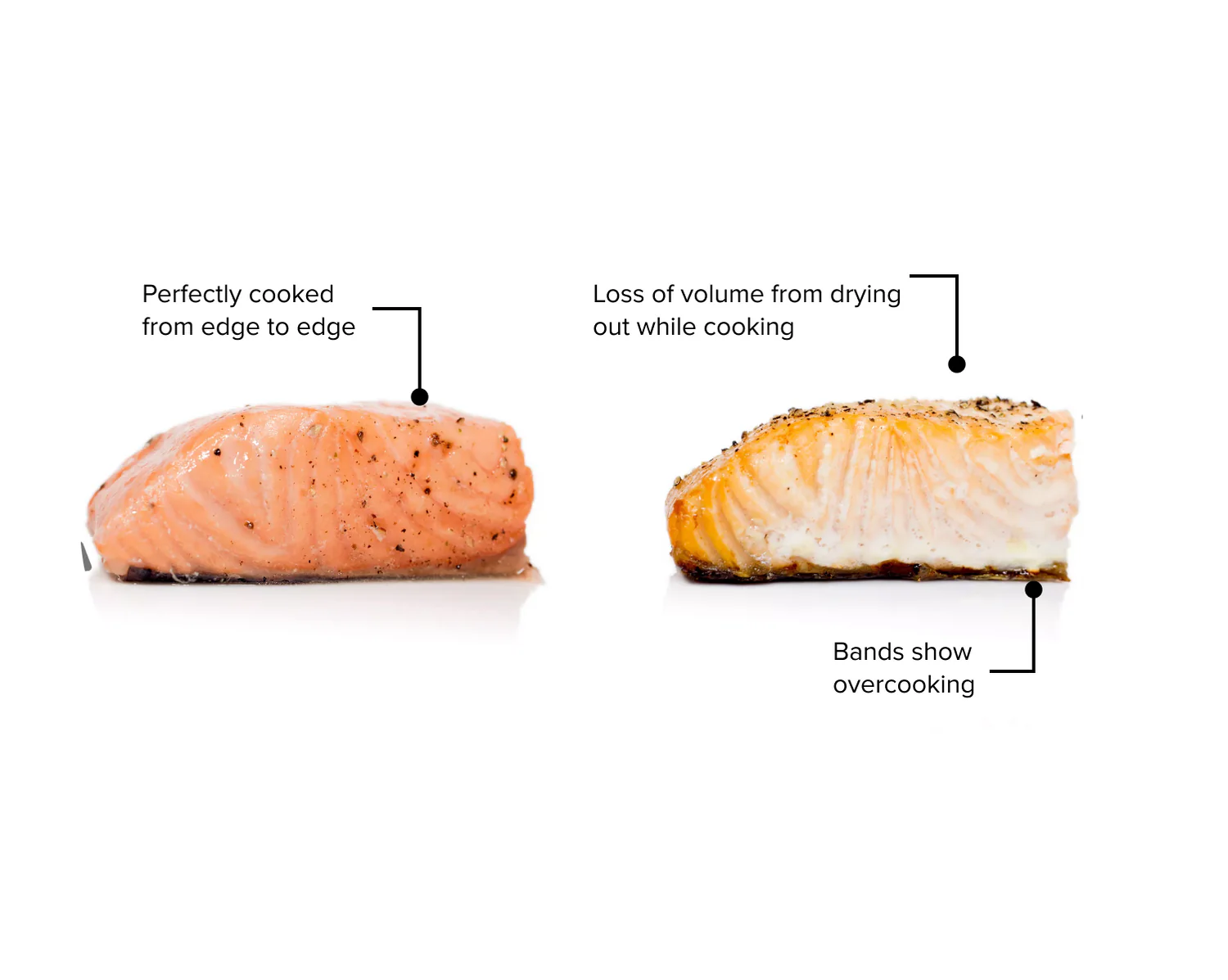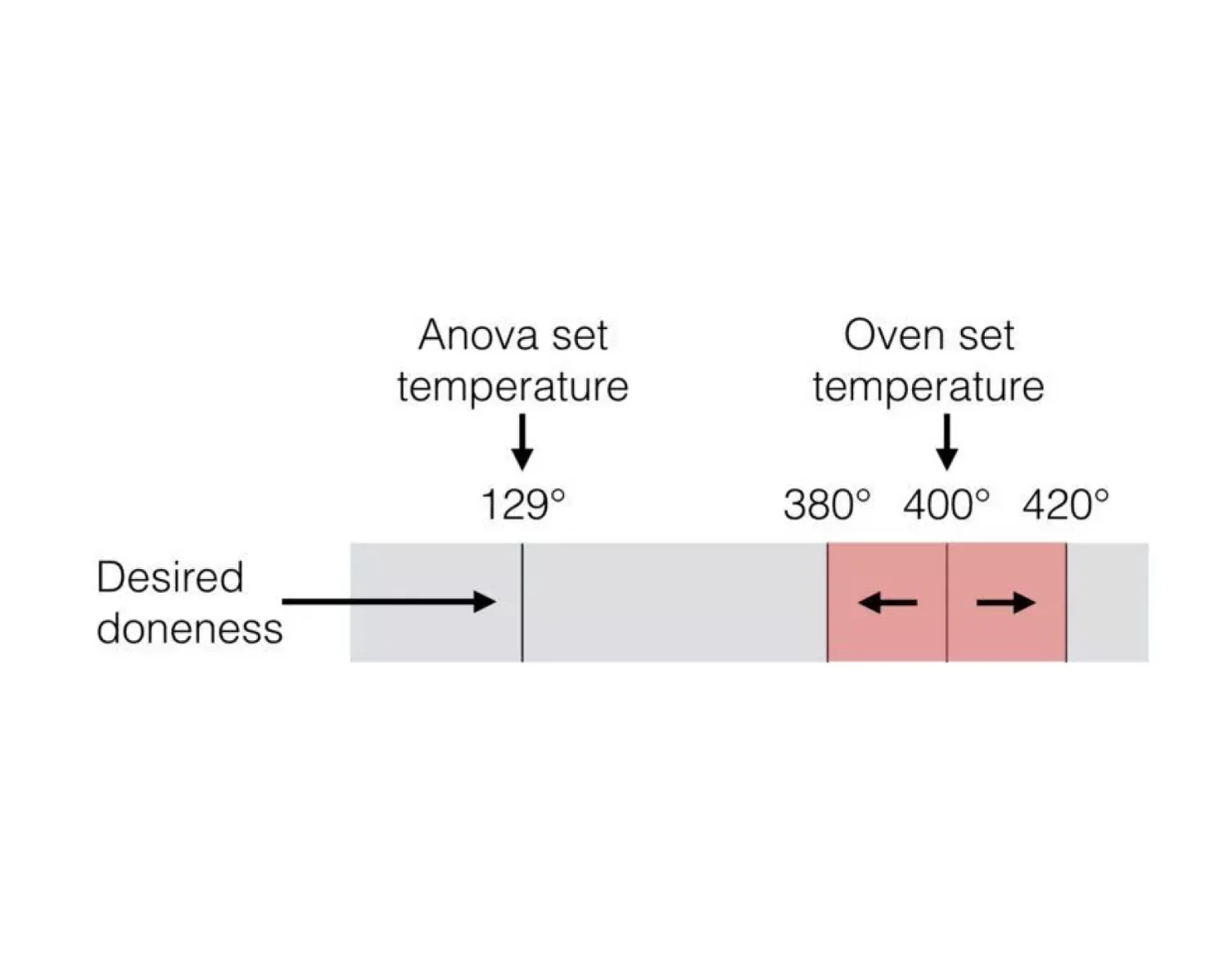Traditional Methods Can’t Handle the Heat.
Once limited to the pros, sous vide (pronounced sue-veed) is a cooking technique that utilizes precise temperature control to deliver consistent, restaurant-quality results. High-end restaurants have been using sous vide cooking for years to cook food to the exact level of doneness desired, every time. The technique recently became popular for home cooks with the availability of affordable and easy-to-use sous vide precision cooking equipment like the Anova’s Sous Vide Cooker.
Sous vide, which means “under vacuum” in French, refers to the process of vacuum-sealing food in a bag, then cooking it to a very precise temperature in a water bath. This technique produces results that are impossible to achieve through any other cooking method.

How are sous vide results better?
Sous Vide Steak vs. Traditionally Cooked Steak
The steak on the left was cooked sous vide at 129ºF, while the steak on the right was pan-cooked. As illustrated in the comparison above between cooking sous vide steak and pan-cooking steak, there are important advantages to cooking sous vide over traditional methods.

Sous Vide Salmon vs. Traditionally Cooked Salmon
The salmon cooked with Anova (left) remains a translucent pink, with a delicate, flaky texture. The pan-cooked salmon (right) has overcooked edges because the surface temperature of the pan is higher than the target cooking temperature. As it dries out, it begins to expel the white albumin.

Sous Vide Eggs vs. Traditionally Cooked Eggs
Whether you’re a poached egg perfectionist or a fan of soft-boiled, sous vide makes your ideal egg achievable every time. The egg on the left cooked consistently to the desired texture. On the right, a guessing game resulted in raw and runny yolks with over-thickened whites.
Why Steak Cooked with Anova is Better
Our customers say that steak cooked with Anova is better than what they could produce using a grill, stovetop, or oven. The reason – when using traditional methods of cooking, heat transfers inefficiently. For example, when you use a grill, stovetop, or oven, heat and temperature fluctuate. According to this Slate article, “A 350-degree residential oven is designed to stay between around 330 and 370 degrees—and that’s if it’s well-calibrated…” Your stovetop and grill are even less precise. Ever wonder what the difference is between “9” and “high” on your stovetop? Let’s take a look at your steak when it’s cooked on a grill, stovetop, or in an oven:
-
Heat fluctuation:
>40°
-
Medium-rare steak target temp:
129° F / 54° C
-
Difference between medium-rare and medium:
5°
-
Chances of hitting 129° F / 54° C:
0%

Heat moving through air is impossible to control or predict. It’s always in flux, which is why you often can’t take your eye off that steak without it burning. Anova eliminates this difficulty – set the temperature to 129° F / 54° C, and you’ll get steak cooked precisely to 129° / 54°.
Even if you get lucky and come close to your target temp, it’s impossible for you hit that temp on anything more than a fraction of the finished product. That’s because heat transfers from the “outside-in” in uneven bands, leaving most of the steak at a temp well above the target. With Anova, the entire steak is cooked evenly, resulting in, well, perfection.
How to Cook the Perfect Steak with Anova.
The best part is that cooking the perfect steak, or anything else for that matter, is super simple with Anova. Here’s how our #anovafoodnerd Bea Mendoza whips up a steak that’s better than the world’s best steakhouses with her Anova. Check out Bea’s sous vide steak recipe and discover how she gets perfect results, every time.

